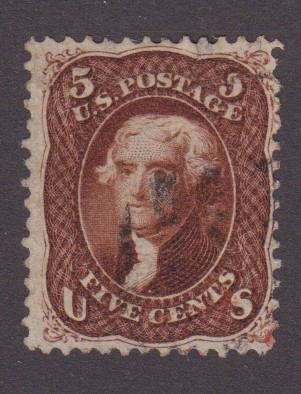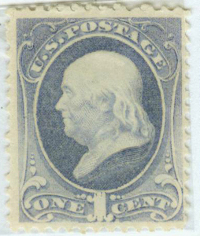
Discussion - Member to Member Sales - Research Center

Discussion - Member to Member Sales - Research Center


This is obviously Michel Number 12; the cancellation date shows that. It is rouletted. I've never seen a rouletted example and can't find a reference to rouletted issues. Michel notes perforation varieties, but as far as I can see, does not mention rouletting.
What am I missing?


Login to Like
this post
This is the entry from my 2016 Scott Catalog;

Looks like it can be rouletted.

1 Member
likes this post.
Login to Like.
excellent help. thanks!

Login to Like
this post
 I have this wrapper from Whipperfurth but can not figure out how to read the date the wrapper was mailed. It is November 10 (I think) but the year?
I have this wrapper from Whipperfurth but can not figure out how to read the date the wrapper was mailed. It is November 10 (I think) but the year?

Login to Like
this post
Hi Jopie,
Yes, it appears to be posted on the 10th of November in Wipperfürth in what was then Prussia and sent to Oldenburg. The year isn't specified.
I believe the AUSG. mark is from Oldenburg applied when it was sorted for delivery.
The 7-8A will be be the collection or processing time, i.e. the period 7pm to 8pm, where the letter A represents the evening (Abend).

Login to Like
this post
it appears that the rectangular cancel was used at the end of the North German Confederation period, around 1870. Before Wipperfürth used the numeral cancel with four concentric rings and the number 1650. When the unification of Germany was complete (the German Reich) in 1871, a round cancel with name and proper date (including year) was used, but at that time the Confederation stamps were not used anymore either. So an educated guess would be 10 November 1870.

Login to Like
this post
Tha
nk you. Nigel and Jansimon for that great explanation of the cancel! Makes perfect sense to me! I had tried the Michel catalogue but could not find that particular cancel. Thanks!
Jopie

Login to Like
this post
08:59:50pm

This is obviously Michel Number 12; the cancellation date shows that. It is rouletted. I've never seen a rouletted example and can't find a reference to rouletted issues. Michel notes perforation varieties, but as far as I can see, does not mention rouletting.
What am I missing?


Login to Like
this post

re: North German Confederation
This is the entry from my 2016 Scott Catalog;

Looks like it can be rouletted.

1 Member
likes this post.
Login to Like.
09:29:20pm
re: North German Confederation
excellent help. thanks!

Login to Like
this post

re: North German Confederation
 I have this wrapper from Whipperfurth but can not figure out how to read the date the wrapper was mailed. It is November 10 (I think) but the year?
I have this wrapper from Whipperfurth but can not figure out how to read the date the wrapper was mailed. It is November 10 (I think) but the year?

Login to Like
this post

re: North German Confederation
Hi Jopie,
Yes, it appears to be posted on the 10th of November in Wipperfürth in what was then Prussia and sent to Oldenburg. The year isn't specified.
I believe the AUSG. mark is from Oldenburg applied when it was sorted for delivery.
The 7-8A will be be the collection or processing time, i.e. the period 7pm to 8pm, where the letter A represents the evening (Abend).

Login to Like
this post

Approvals
re: North German Confederation
it appears that the rectangular cancel was used at the end of the North German Confederation period, around 1870. Before Wipperfürth used the numeral cancel with four concentric rings and the number 1650. When the unification of Germany was complete (the German Reich) in 1871, a round cancel with name and proper date (including year) was used, but at that time the Confederation stamps were not used anymore either. So an educated guess would be 10 November 1870.

Login to Like
this post

re: North German Confederation
Tha
nk you. Nigel and Jansimon for that great explanation of the cancel! Makes perfect sense to me! I had tried the Michel catalogue but could not find that particular cancel. Thanks!
Jopie

Login to Like
this post

